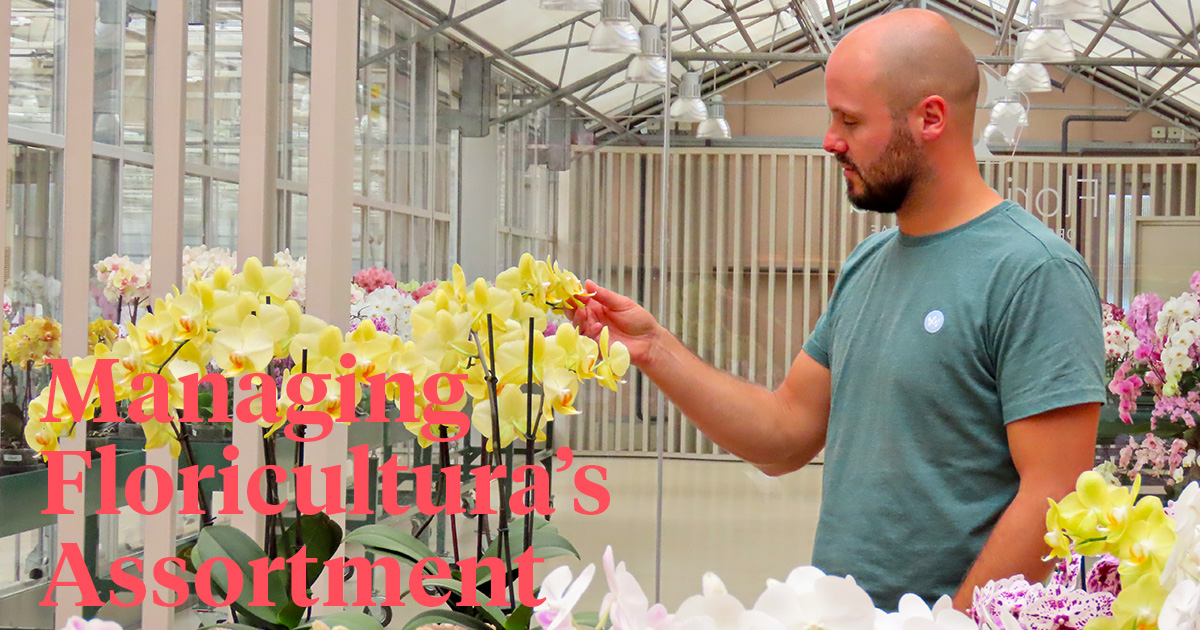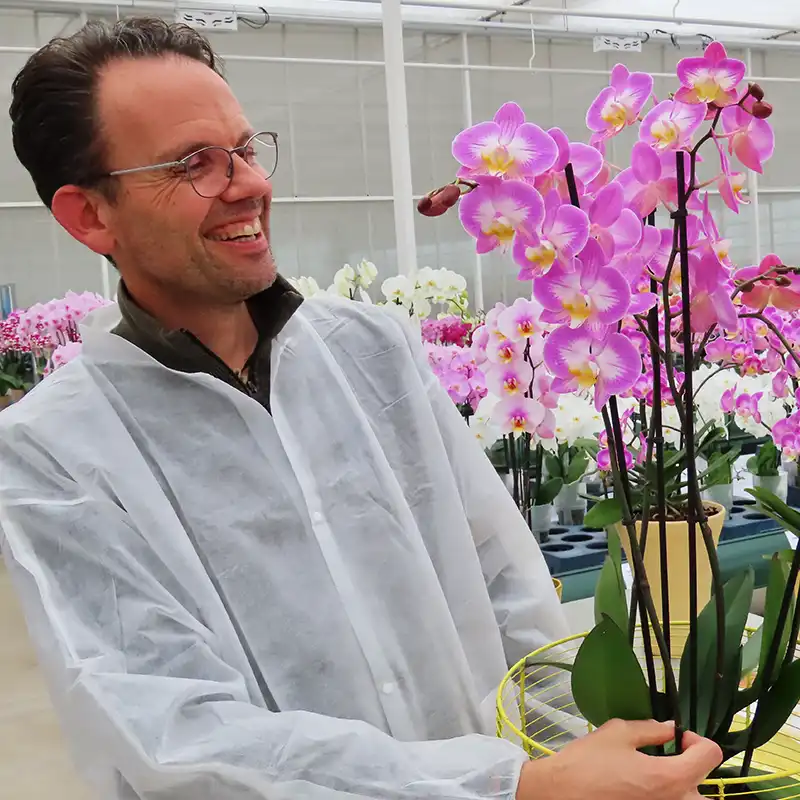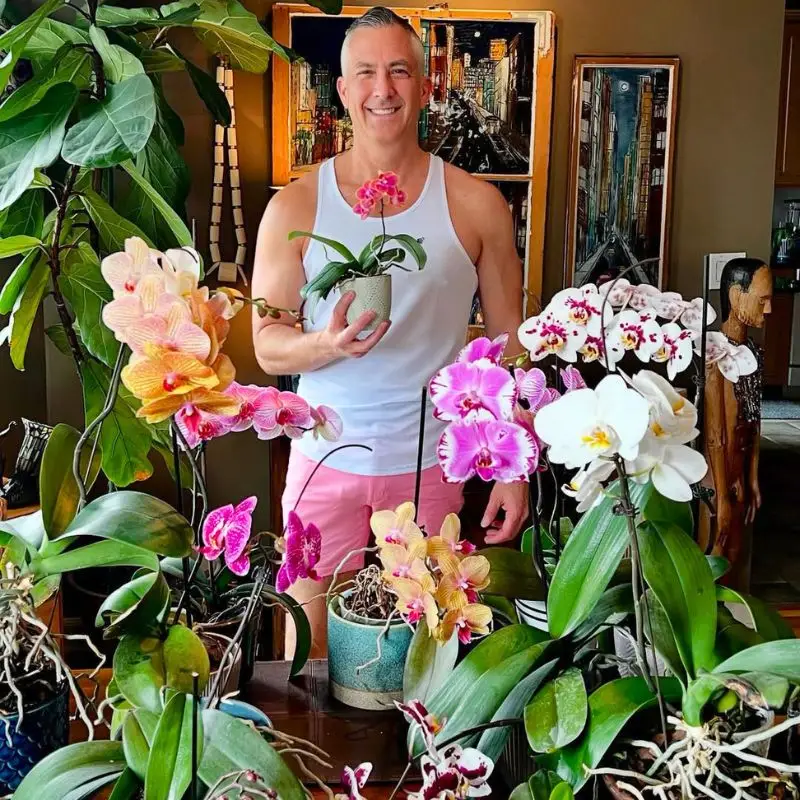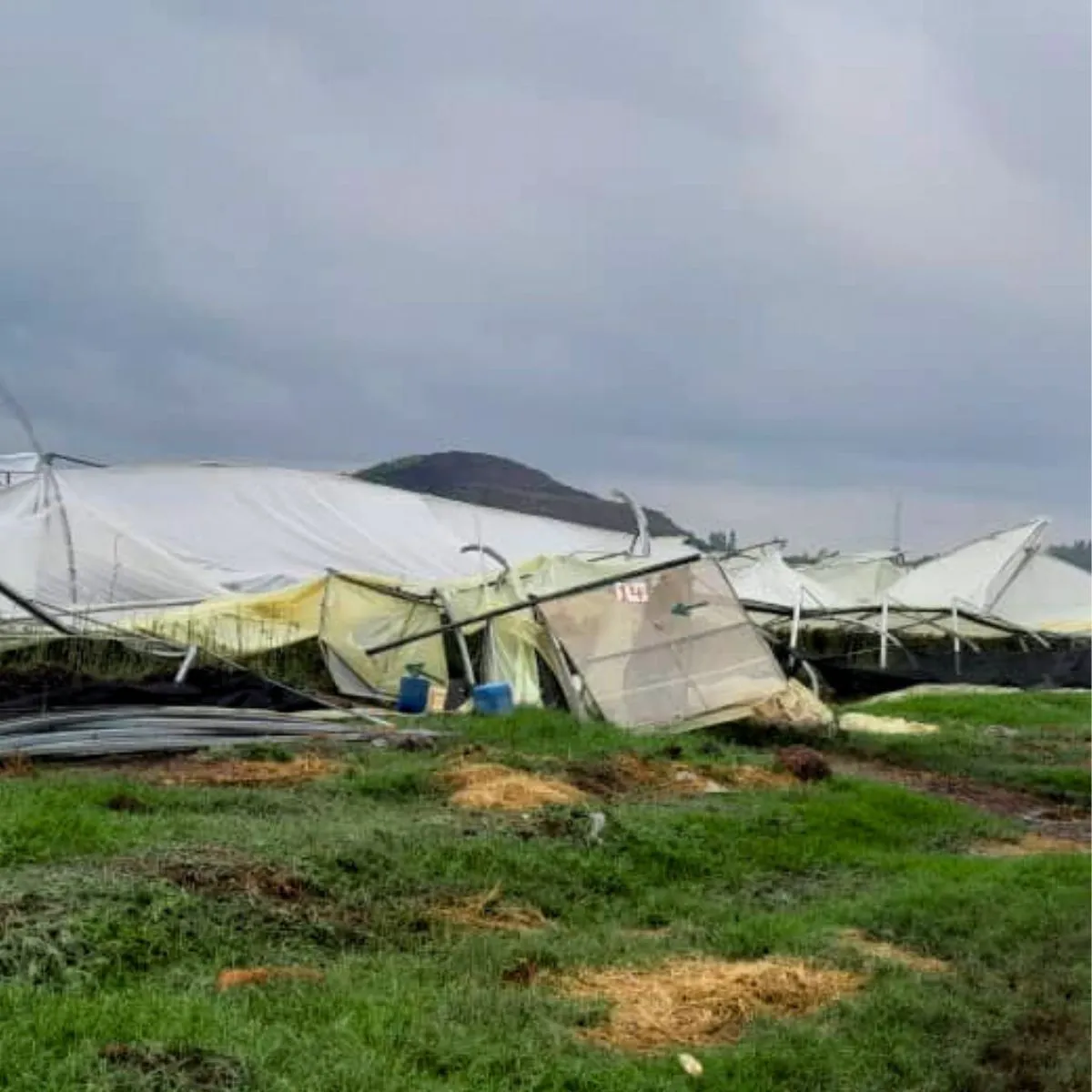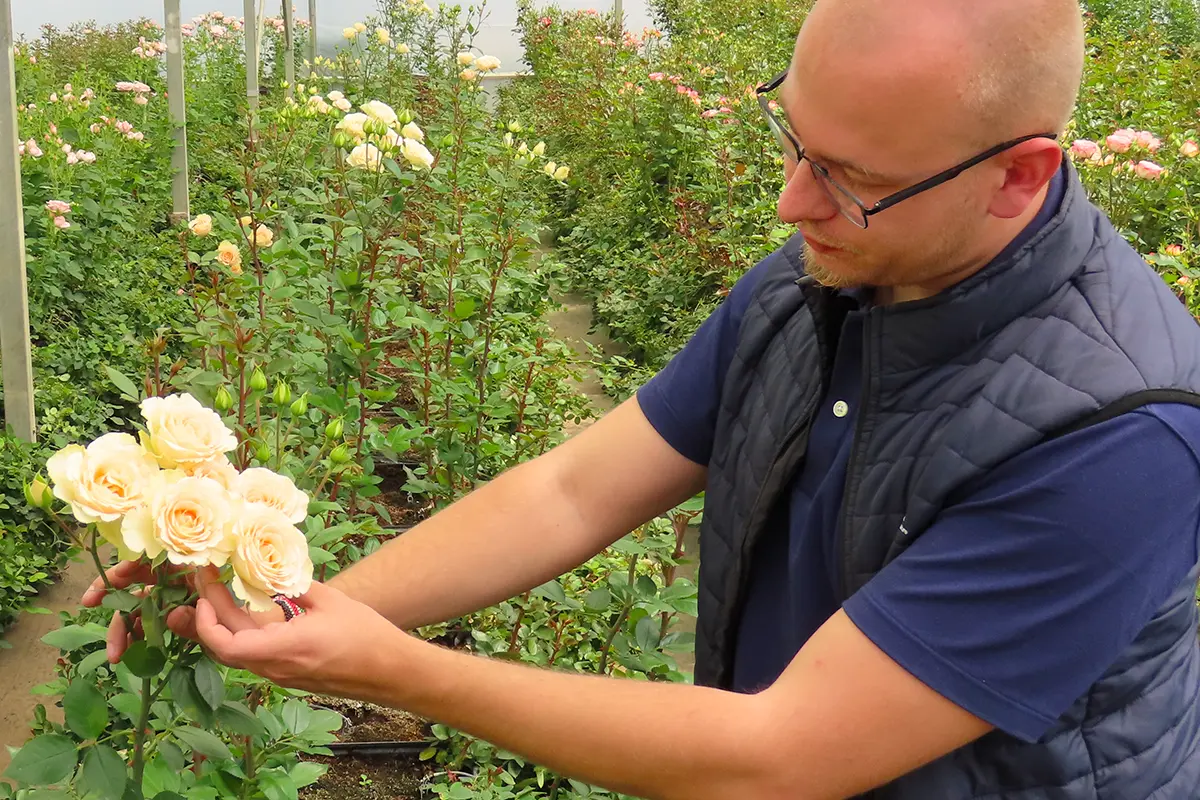It is the big mystery of creating new plants: genetics. Breeding goes so much further than simply crossing two species and hoping for the best. Through the insights of Floricultura's Stefan Kuiper, you will learn first-hand from this mostly hidden part of the business. Read about the delicate balance of beauty and scientific precision required to develop tomorrow's orchids, the pursuit of new colors, the critical role of cross-breeding, and the significance of collaboration, revealing the intricate procedures contributing to a diverse assortment.
Floricultura's Genetics Specialist Stefan Kuiper
At 33 years of age, Stefan Kuiper has already spent seven years at Floricultura, two of which he has served as the assortment manager, being responsible for the company's genetics pool. His focus at Floricultura remains firmly fixed on the development and diversification of the company's offerings. "The balance within the entire assortment is something I pay a lot of attention to," says Stefan. Phalaenopsis is by far the largest product group, with white and pink plants still leading the pack. However, Stefan emphasizes the importance of special varieties as a crucial draw for their clientele, demonstrating the need for diversity and breadth in their collection.
"It takes about nine years in total before you can deliver a new variety in large numbers. So you have to look ahead broadly, not just focus on the standard colors and types," Stefan comments on the challenges of his role.
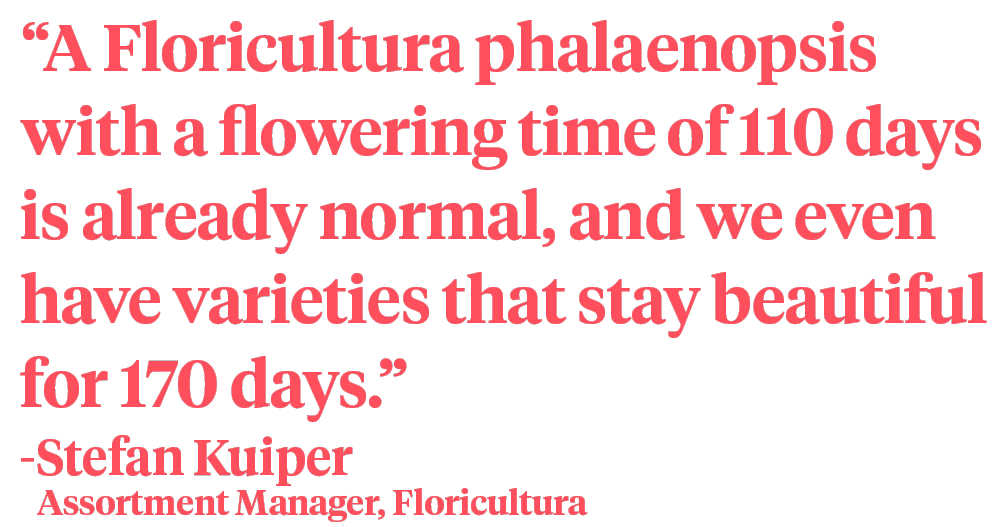
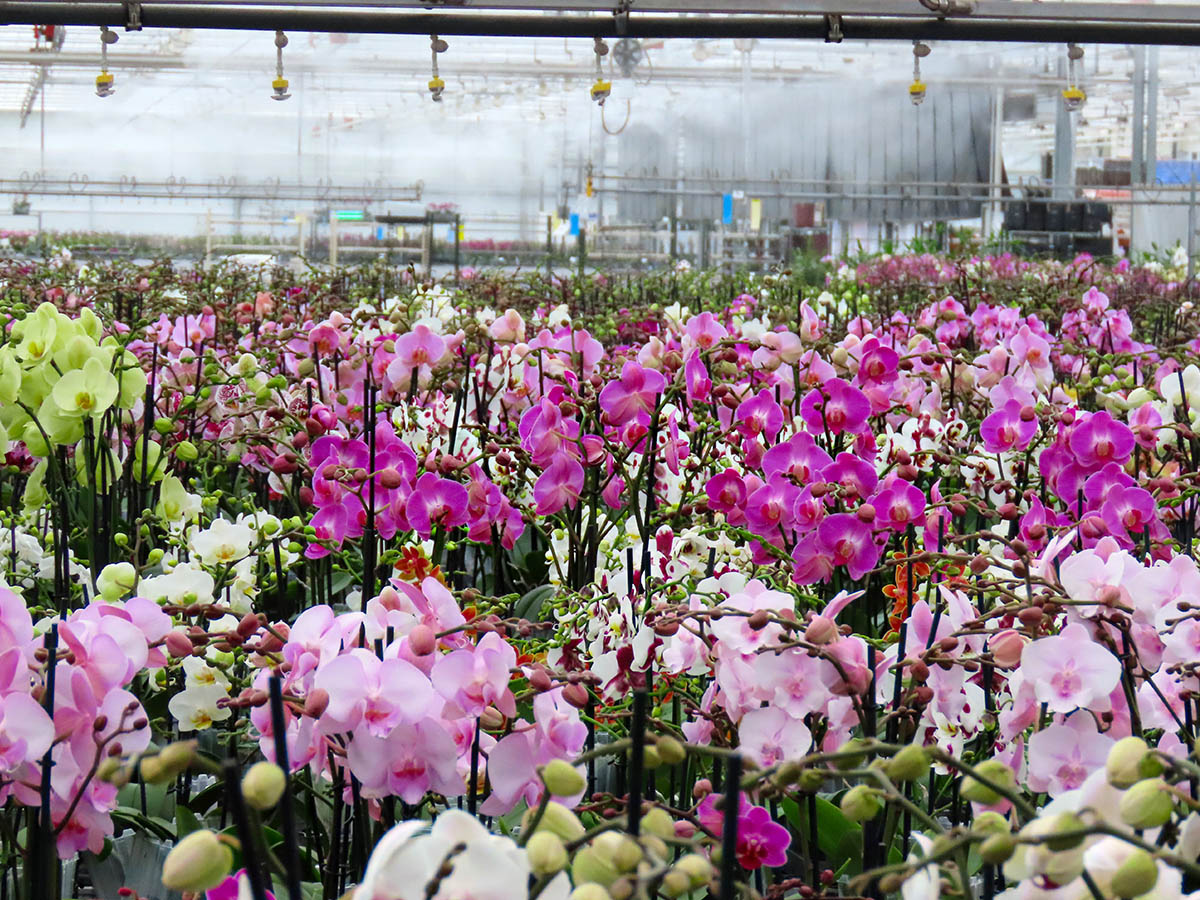
From Lab to Sales
Stefan's responsibilities span the laboratory, greenhouse, and sales department. Everything starts with breeding, from the selection process to liaising with the breeders and aligning with the overall breeding goals. "All aspects must match at each stage to eventually deliver something," he explains.
When asked about his main focus areas, Stefan says, "I mainly look at whether a product is different. I don't necessarily have to find it beautiful, as tastes naturally vary around the world. The product must be primarily different, and of course, all other parameters must be correct to make a new variety commercially successful."
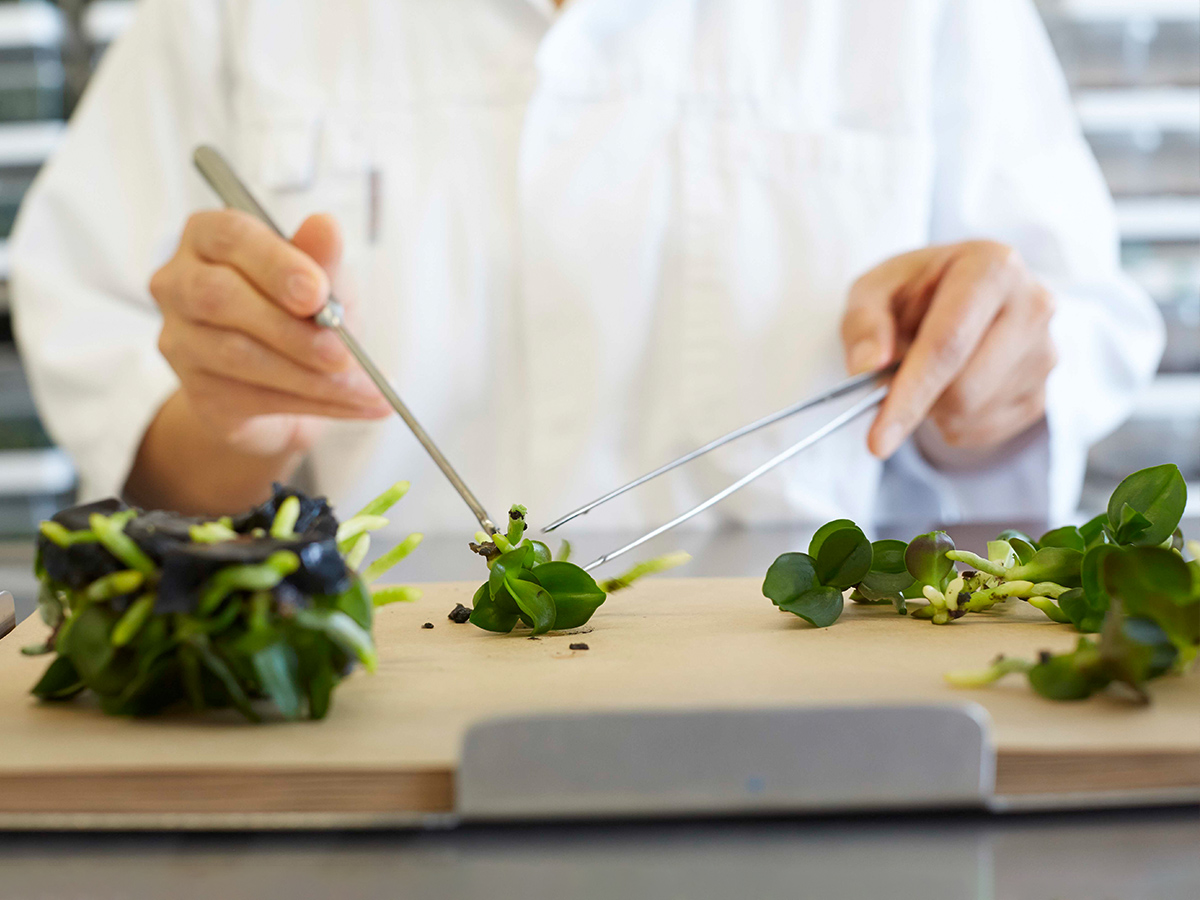
Stefan also addresses a fascinating paradox regarding phalaenopsis. While many younger consumers might perceive these plants as old-fashioned, Stefan notes that they're often found in trendy places in the hospitality industry, like hotels. Moreover, he reveals a recent resurgence of interest in scented phalaenopsis, which has sparked a new focus on their own AromorA line.
A 101 on the Technical Part of Breeding
Creating a new phalaenopsis variety begins with knowing the specifications and characteristics of the existing types. Floricultura houses a greenhouse filled with crossing parents—these are the mother plants, the basic material for breeding. The goal is to cross the traits of one plant with another that possesses other desirable characteristics. Time for a 101 on breeding phalaenopsis.
Stefan:
"Phalaenopsis plants are indeed just like people. So you have two different plants: one plays the role of 'mother' and the other the role of 'father'. But that can also be done the other way around because plants are hermaphroditic. You take the clumps of pollen from the father, which is under the pollen cap of the plant which is right above the lip of the flower, and place it under the pollen cap of the mother. In the wild, an insect naturally does that, but we do it ourselves. After half a year, the flower creates a seed pod on the mother plant that contains a hundred thousand seeds, as fine as dust.
We will sow a number of those seeds and all of them will produce different seedlings. That will be hundreds of plants, not one of which is the same. Just like with people, every brother or sister is slightly different, even twins. We inspect that batch of seedlings and determine which variety is good enough to propagate. That is then the cloning phase, in which the eyes of that plant - that is the place where a new side branch can arise - serve as starting material. When cloning, all specific properties of that one plant are preserved, including color, pattern, size, shape, fragrance, and even if the variety has two spikes. From this moment on, all descendants are identical.Those eyes go to the lab for a year and a half. Then they grow in a plug in a greenhouse for half a year. After that they grow in pot for another 24 weeks, and then they move to a cooler greenhouse for 18 weeks, in order to flower.
If a plant is still suitable at the end of this process, we will test it with customers in different climate zones. That can be in the Netherlands, but also in Brazil or the USA. It is of course possible that a plant performs differently under different circumstances at different growers."
And voilà: A new variety is born!
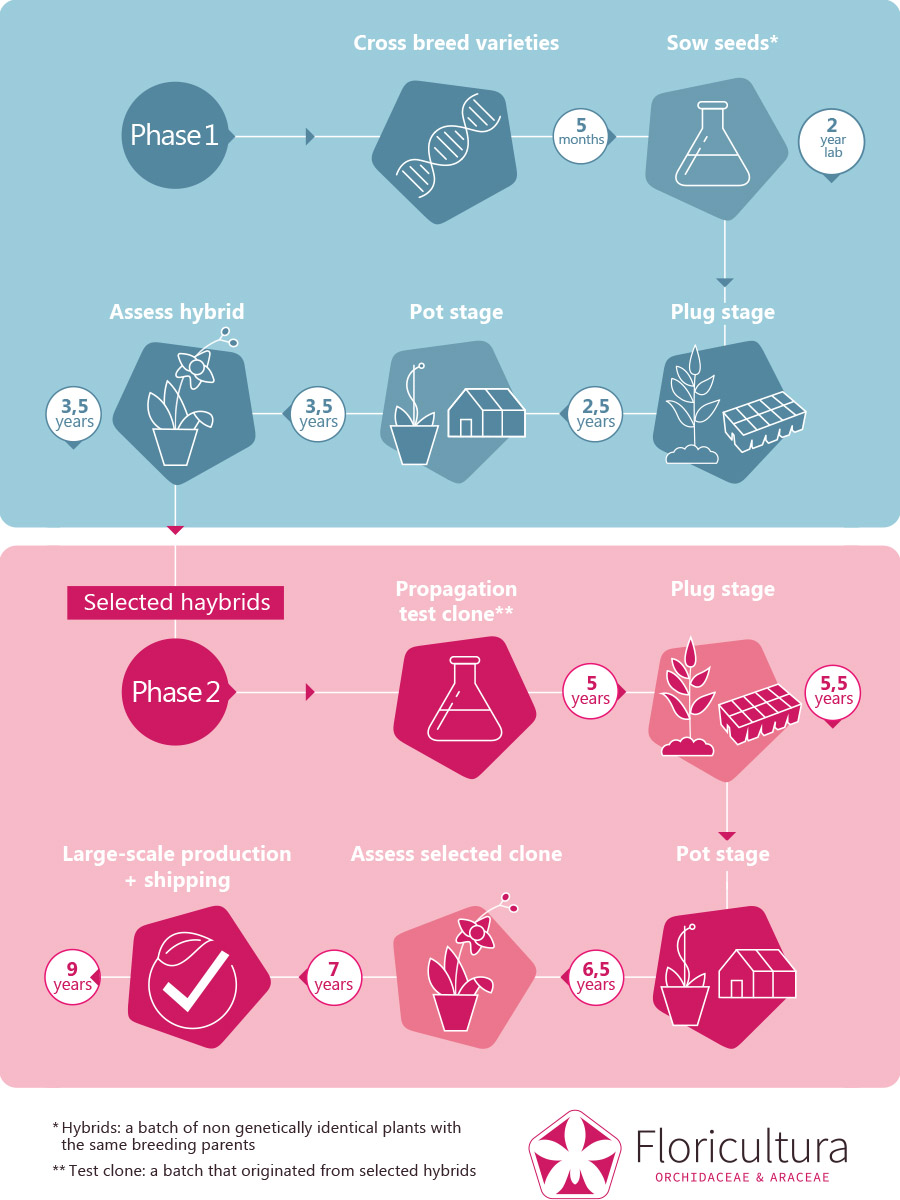
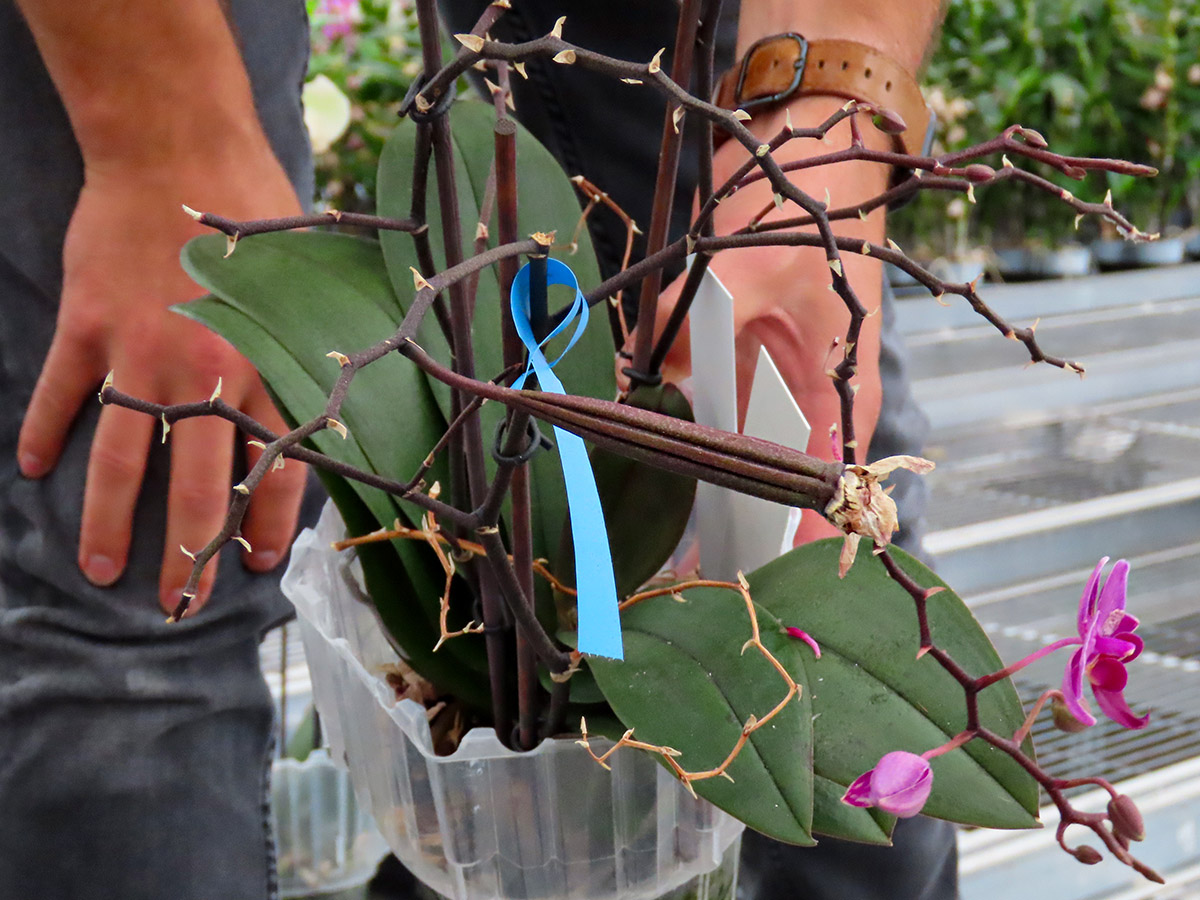
Success (Not Always) Guaranteed
The success of the cross-breeding process isn't always guaranteed. While breeders have an increasing knowledge of phalaenopsis and can somewhat predict the outcome, there is always a degree of uncertainty. Stefan elaborates, "We know which crossing parents within our range are good at passing on certain properties like color, scent, branch structure, or durability. With this data, we reduce the uncertainty factor. That's a logical development in our job as a breeder."
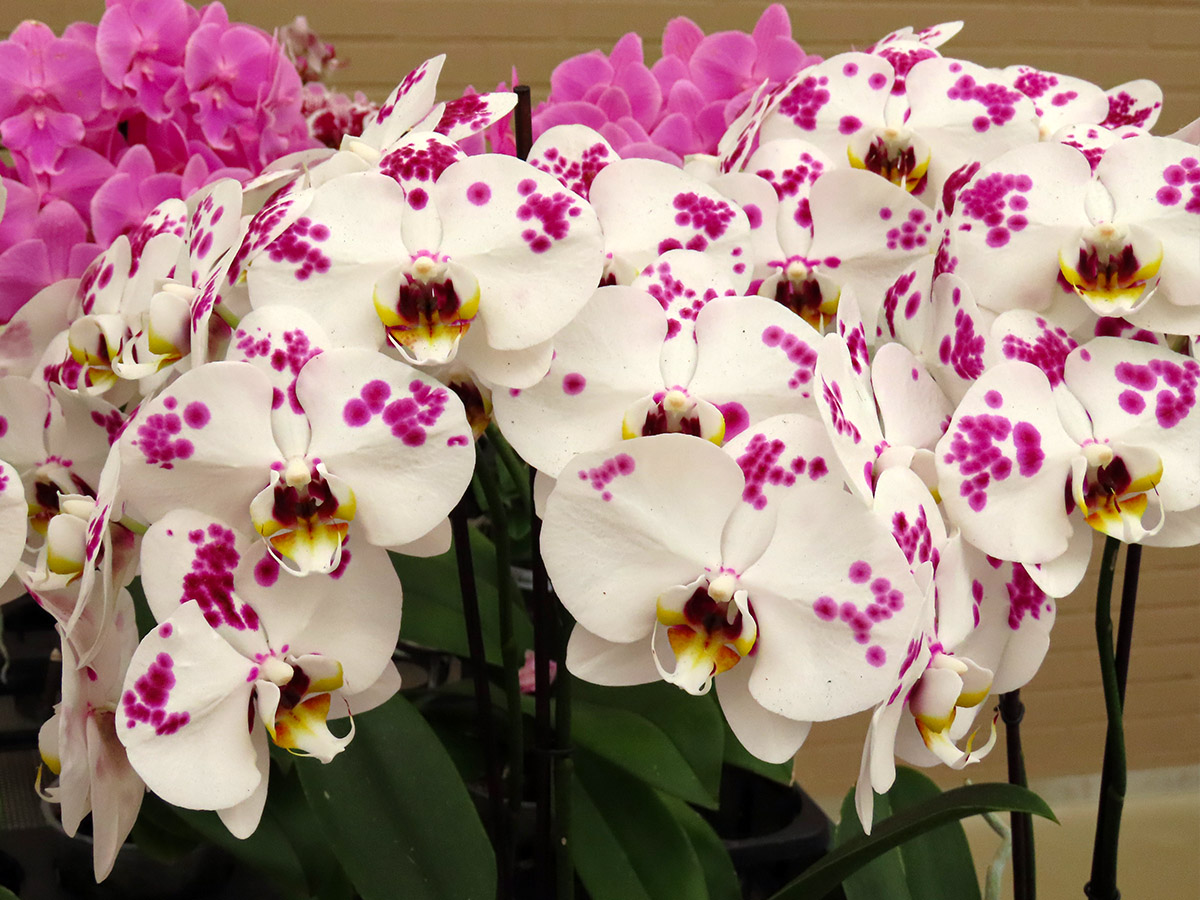
For a new species to be commercially successful, it must meet at least one of the following three conditions, according to Stefan:
- Cultivation technical improvement
- Ornamental improvement
- Total novelty
He notes that the focus is currently on cultivation technical improvements, as this can drastically reduce the grower's costs: "A phalaenopsis grower normally takes into account 48 weeks of cultivation: 30 weeks warm (at 28 degrees Celsius) and 18 weeks cool (at 19 to 20 degrees Celsius). Our test varieties are always grown with a cultivation time of 24 weeks, which we're improving now by also growing plants with 17 weeks of propagation. That saves the grower a lot of work, time, and costs for energy and personnel.
But also think of shelf life at the florist and the end consumer. A Floricultura phalaenopsis with a flowering time of 110 days is already normal, and we even have varieties that stay beautiful for 170 days."
Stefan adds: "Besides meeting one or more of these three aforementioned conditions, it can only be successful if it also pays for itself afterward." This means several thousand plants of each and every single variety need to be sold annually to be profitable.
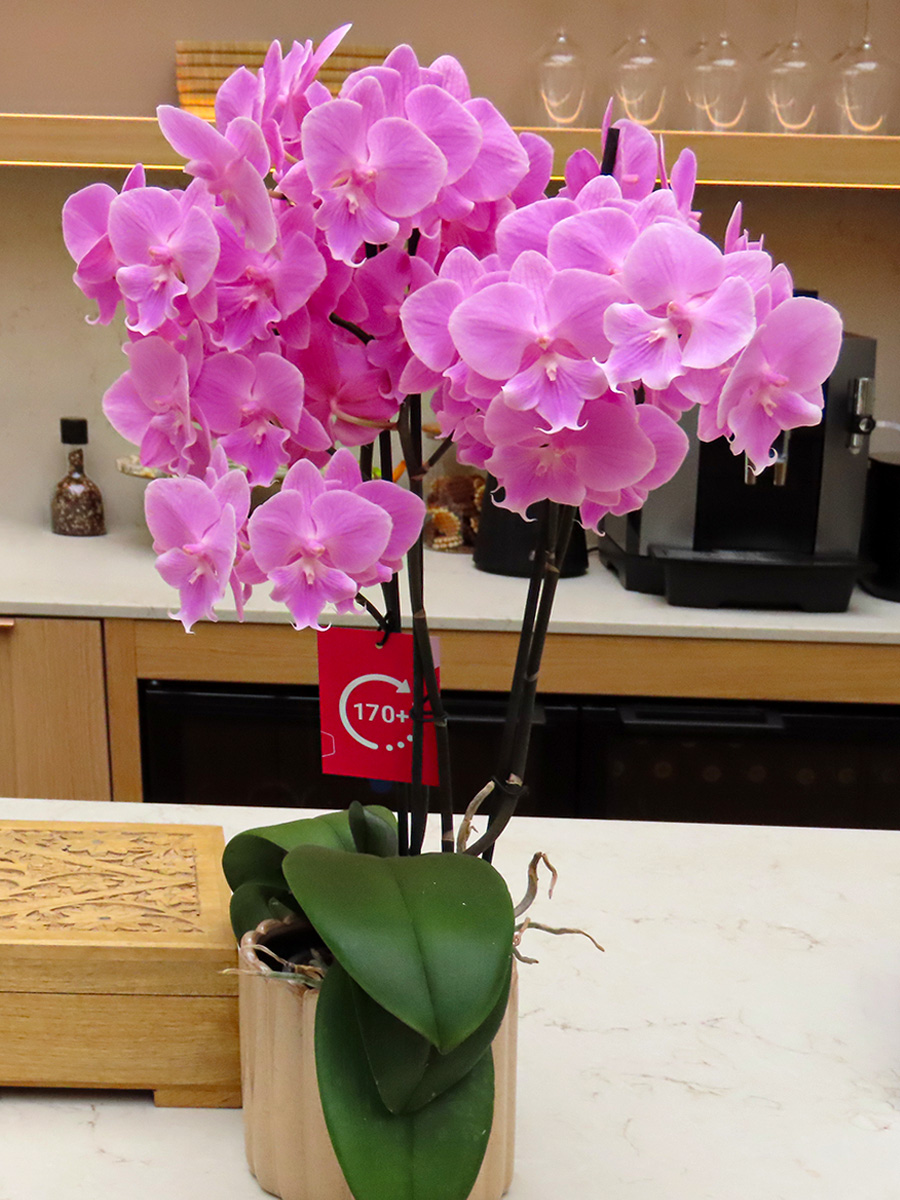
Quest for the Holy Grail
What is the holy grail for a phalaenopsis breeder, you might wonder? According to Stefan, it would be to add new colors to the mix, such as apple green, Ferrari red, or the bright orange of the Dutch soccer team. These aren't all natural colors for a phalaenopsis, making it quite a challenge.
Currently quite popular are 'peloric' orchids, which are naturally mutated flowers with unusual features such as jagged edges, strange lips, or bizarre flower shapes. There are breeders in Taiwan who continue to breed on this to develop a whole new variety.
When asked about the future of genetics in phalaenopsis breeding, Stefan believes that the key is to always have enough good material for cross-breeding. For this purpose, Floricultura collaborates with other breeders from different countries to avoid inbreeding among their species. The evolution of breeding techniques is a natural progression, as with increasing knowledge of the plants, the outcomes of different parent combinations can be more accurately predicted.
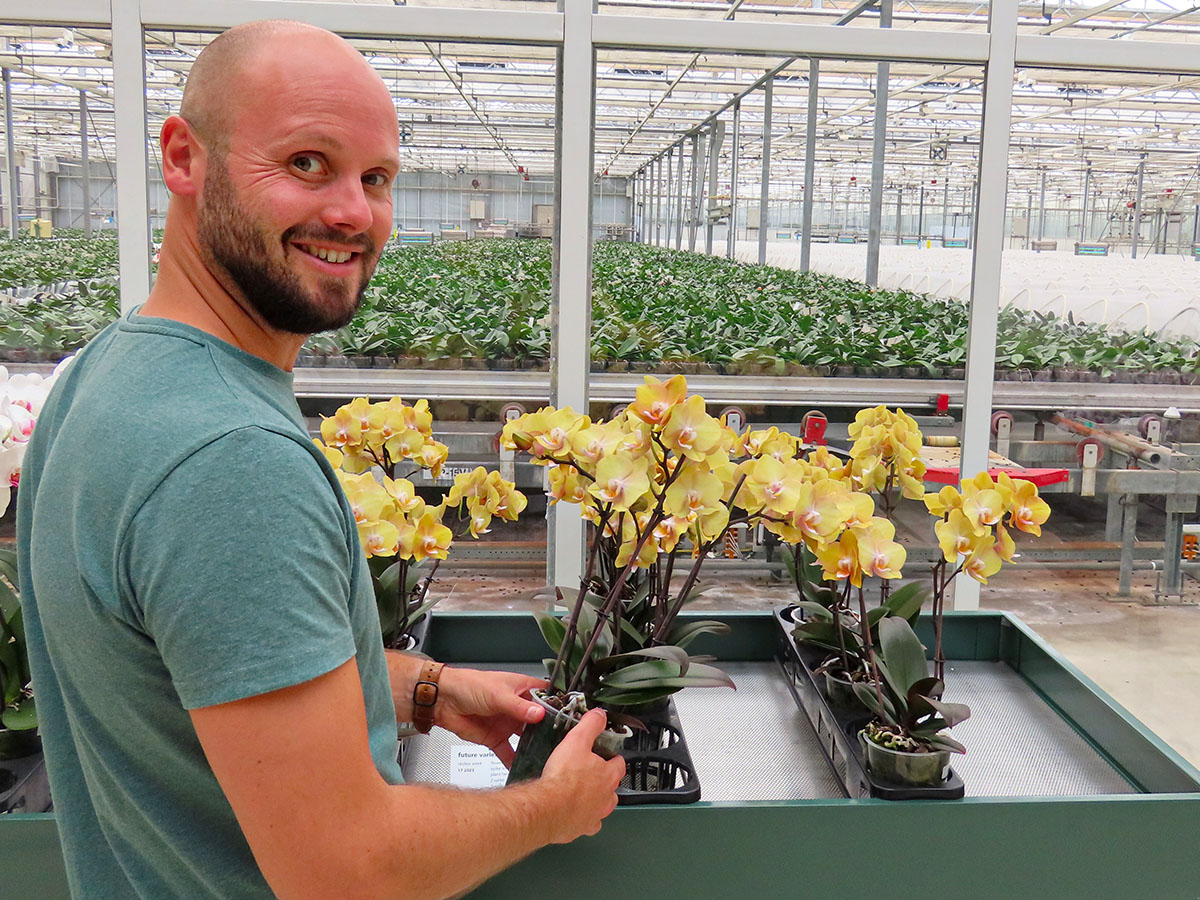
Serving Every Segment
Listening to Stefan it is quite clear what he loves about his job. When asked, he cites the diversity of the work and the ability to interact at various levels within the company. He expresses excitement when customers appreciate a new species. "We recently held Open House where we showed a whole range of phalaenopsis to consumers and asked them which ones they found the most beautiful. We had 3,500 visitors, and guess what? These end consumers found everything beautiful! So, there are inherently no ugly phalaenopsis. At least not with us (smiles). And apparently, with our assortment, we can serve every segment, whether it comes to the split between high-end florist and retail."
Despite all this knowledge and information, breeding remains an exciting profession. With so many beautiful, unique plants all vying to be the strongest and the most exquisite, choosing the perfect plant for the future is no easy task, as Stefan and his team at Floricultura know well.

